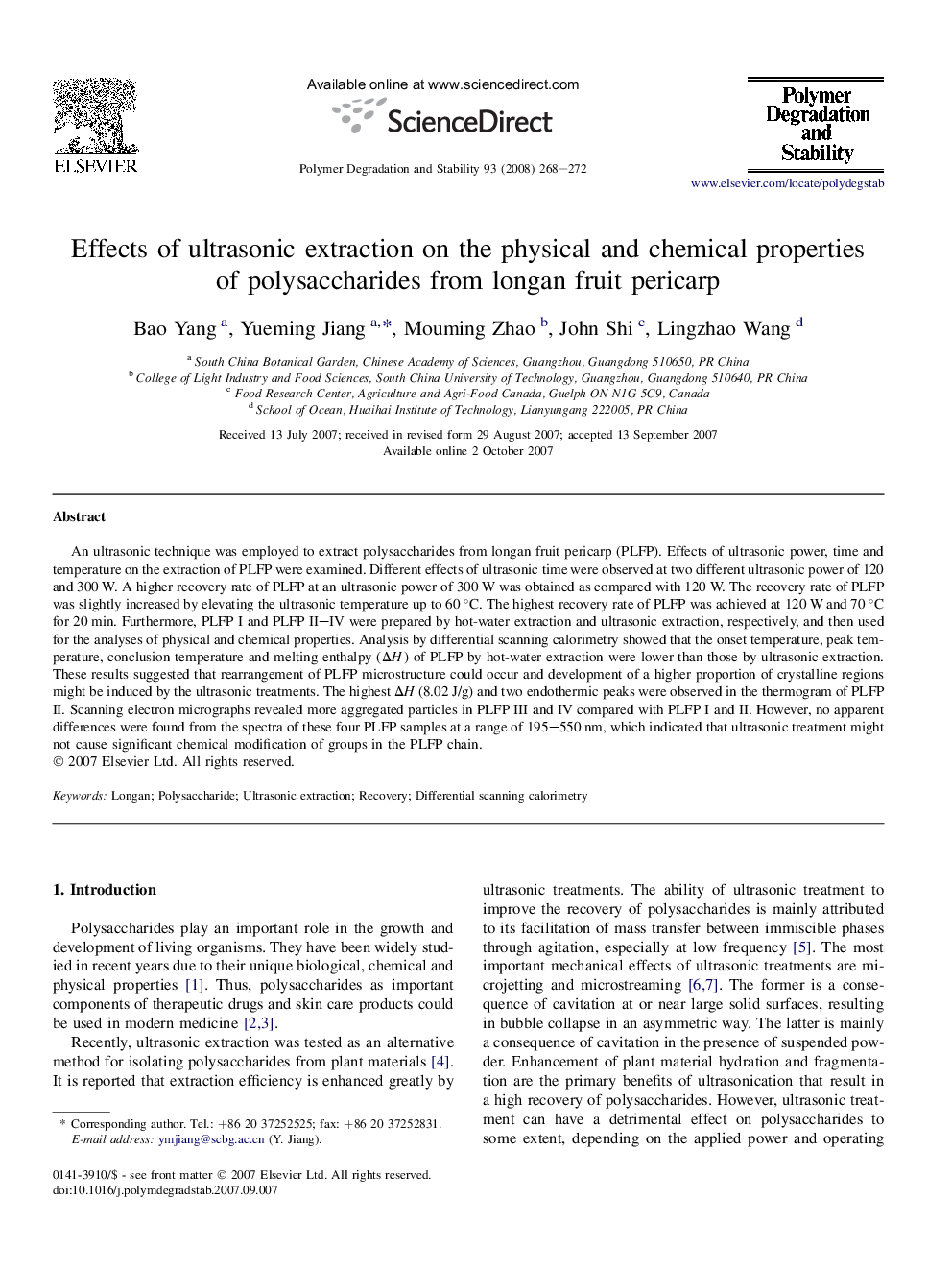| Article ID | Journal | Published Year | Pages | File Type |
|---|---|---|---|---|
| 5204663 | Polymer Degradation and Stability | 2008 | 5 Pages |
Abstract
An ultrasonic technique was employed to extract polysaccharides from longan fruit pericarp (PLFP). Effects of ultrasonic power, time and temperature on the extraction of PLFP were examined. Different effects of ultrasonic time were observed at two different ultrasonic power of 120 and 300 W. A higher recovery rate of PLFP at an ultrasonic power of 300 W was obtained as compared with 120 W. The recovery rate of PLFP was slightly increased by elevating the ultrasonic temperature up to 60 °C. The highest recovery rate of PLFP was achieved at 120 W and 70 °C for 20 min. Furthermore, PLFP I and PLFP II-IV were prepared by hot-water extraction and ultrasonic extraction, respectively, and then used for the analyses of physical and chemical properties. Analysis by differential scanning calorimetry showed that the onset temperature, peak temperature, conclusion temperature and melting enthalpy (ÎH) of PLFP by hot-water extraction were lower than those by ultrasonic extraction. These results suggested that rearrangement of PLFP microstructure could occur and development of a higher proportion of crystalline regions might be induced by the ultrasonic treatments. The highest ÎH (8.02 J/g) and two endothermic peaks were observed in the thermogram of PLFP II. Scanning electron micrographs revealed more aggregated particles in PLFP III and IV compared with PLFP I and II. However, no apparent differences were found from the spectra of these four PLFP samples at a range of 195-550 nm, which indicated that ultrasonic treatment might not cause significant chemical modification of groups in the PLFP chain.
Related Topics
Physical Sciences and Engineering
Chemistry
Organic Chemistry
Authors
Bao Yang, Yueming Jiang, Mouming Zhao, John Shi, Lingzhao Wang,
